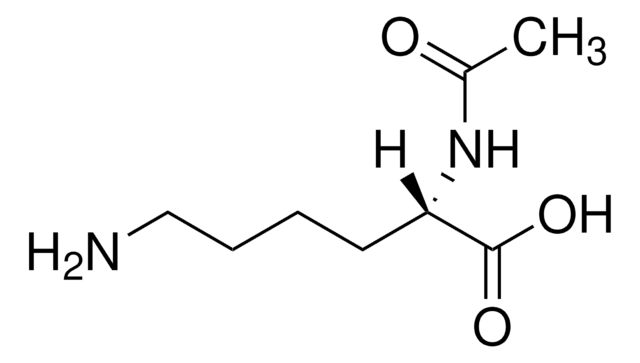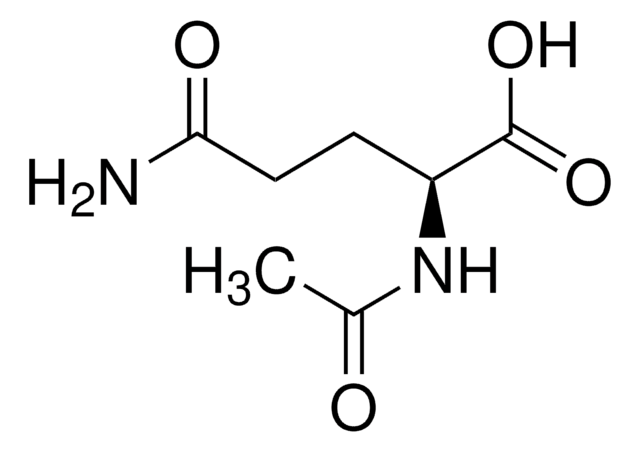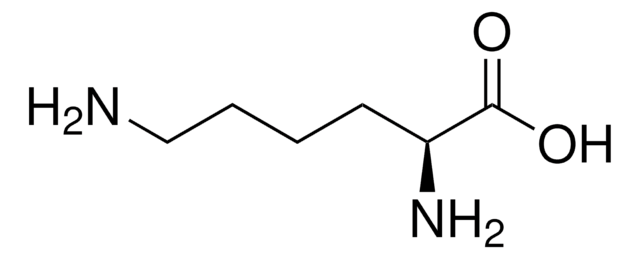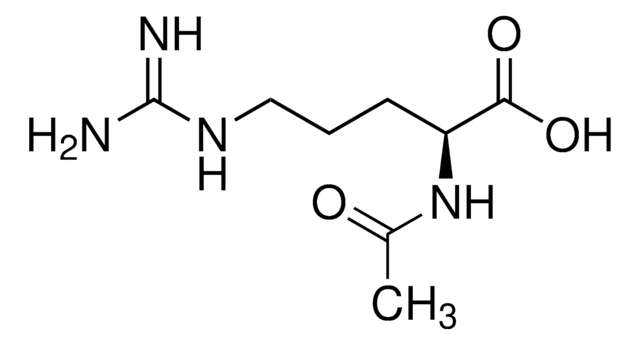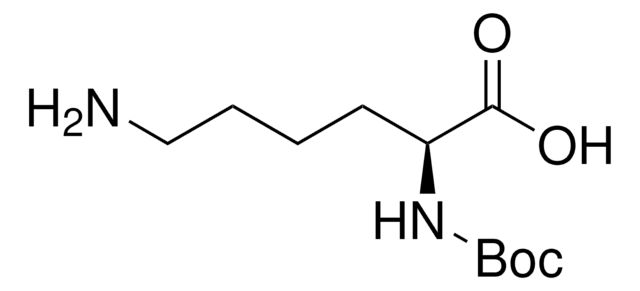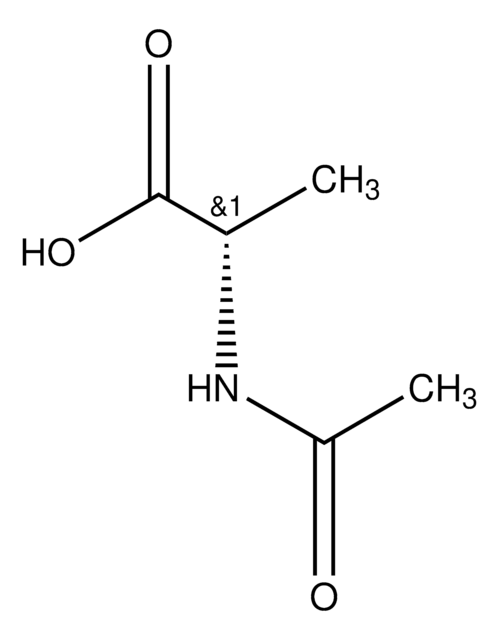A4021
Nε-Acetyl-L-lysine
≥98% (TLC)
Synonyme(s) :
N6-acetyl-L-lysine
About This Item
Produits recommandés
Nom du produit
Nε-Acetyl-L-lysine,
Essai
≥98% (TLC)
Niveau de qualité
Forme
powder
Concentration
50 mg/mL in 80% acetic acid
Couleur
colorless to white
Pf
250 °C (dec.) (lit.)
Température de stockage
−20°C
Chaîne SMILES
CC(=O)NCCCC[C@H](N)C(O)=O
InChI
1S/C8H16N2O3/c1-6(11)10-5-3-2-4-7(9)8(12)13/h7H,2-5,9H2,1H3,(H,10,11)(H,12,13)/t7-/m0/s1
Clé InChI
DTERQYGMUDWYAZ-ZETCQYMHSA-N
Vous recherchez des produits similaires ? Visite Guide de comparaison des produits
Catégories apparentées
Application
- Nε-Acetyl L-α Lysine Improves Activity and Stability of α-Amylase at Acidic Conditions: A Comparative Study with other Osmolytes. This study highlights the use of Nε-Acetyl-ʟ-lysine in enhancing the functional stability and activity of α-amylase under acidic conditions, demonstrating its potential as a valuable additive in industrial enzyme applications (Joghee et al., 2020).
Actions biochimiques/physiologiques
Code de la classe de stockage
11 - Combustible Solids
Classe de danger pour l'eau (WGK)
WGK 3
Point d'éclair (°F)
Not applicable
Point d'éclair (°C)
Not applicable
Faites votre choix parmi les versions les plus récentes :
Déjà en possession de ce produit ?
Retrouvez la documentation relative aux produits que vous avez récemment achetés dans la Bibliothèque de documents.
Les clients ont également consulté
Notre équipe de scientifiques dispose d'une expérience dans tous les secteurs de la recherche, notamment en sciences de la vie, science des matériaux, synthèse chimique, chromatographie, analyse et dans de nombreux autres domaines..
Contacter notre Service technique